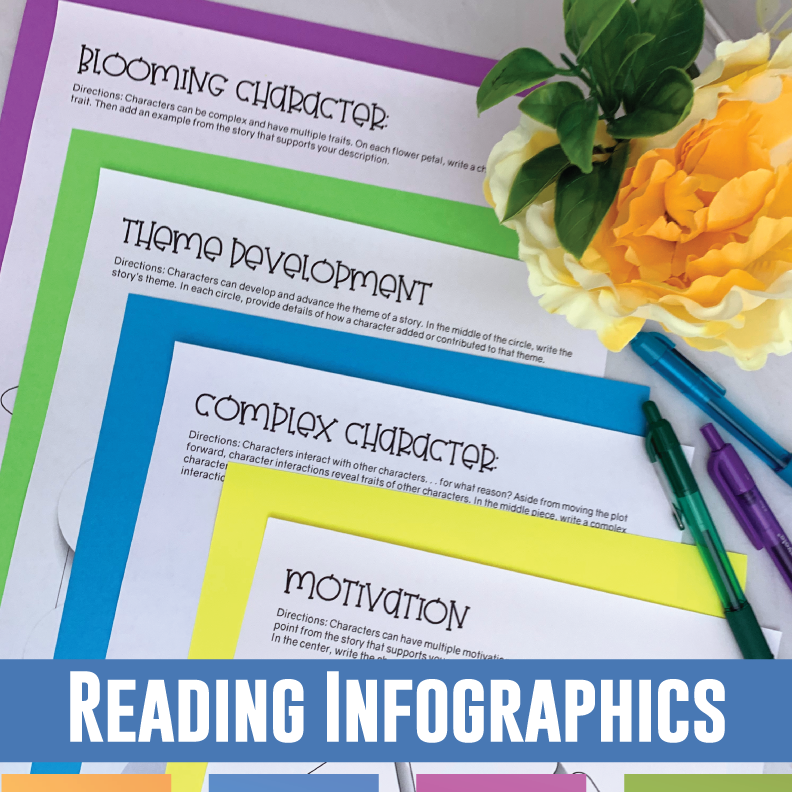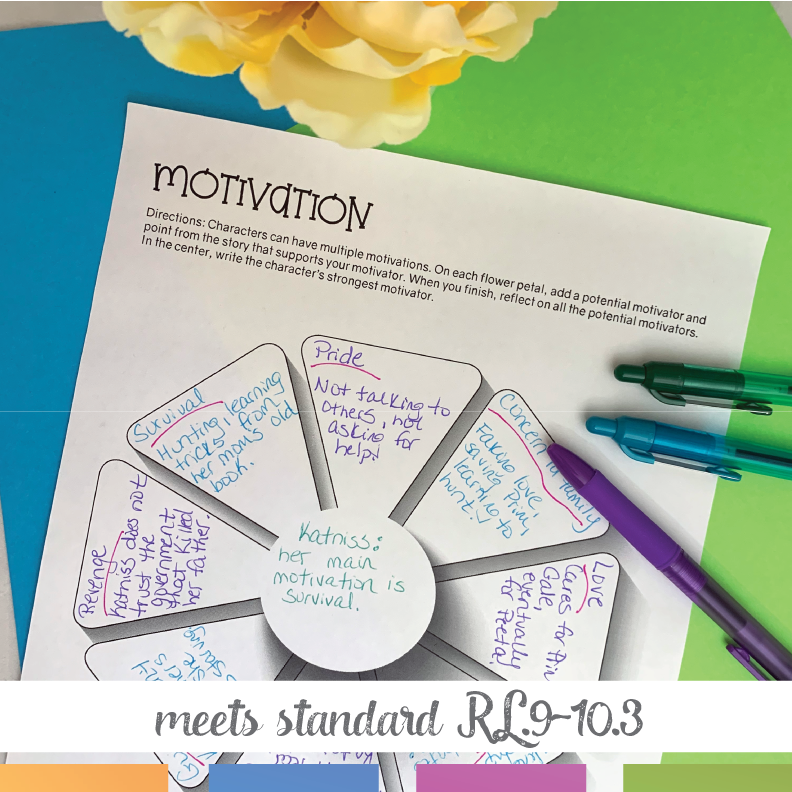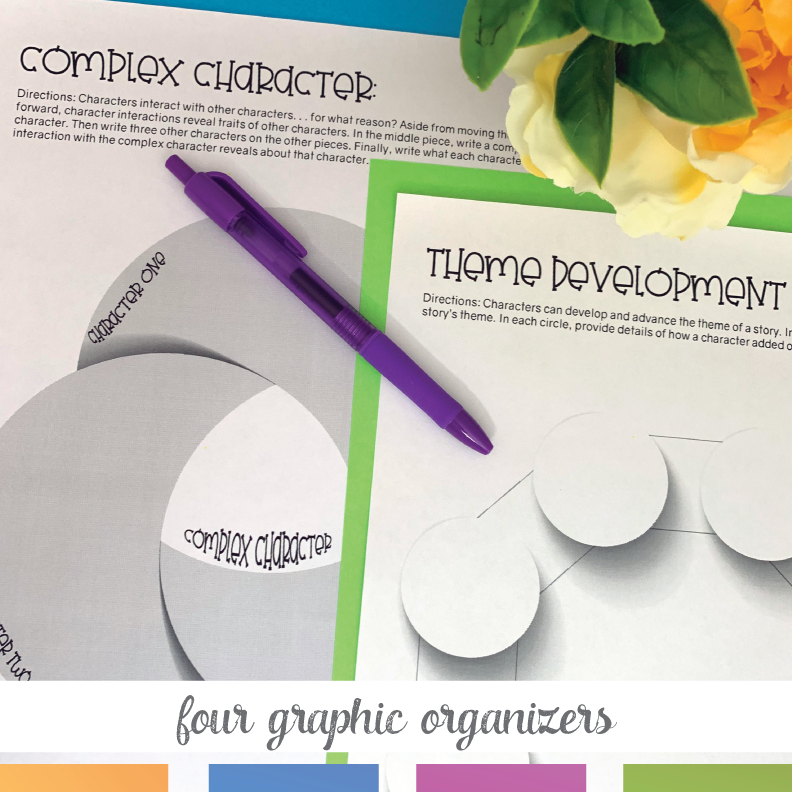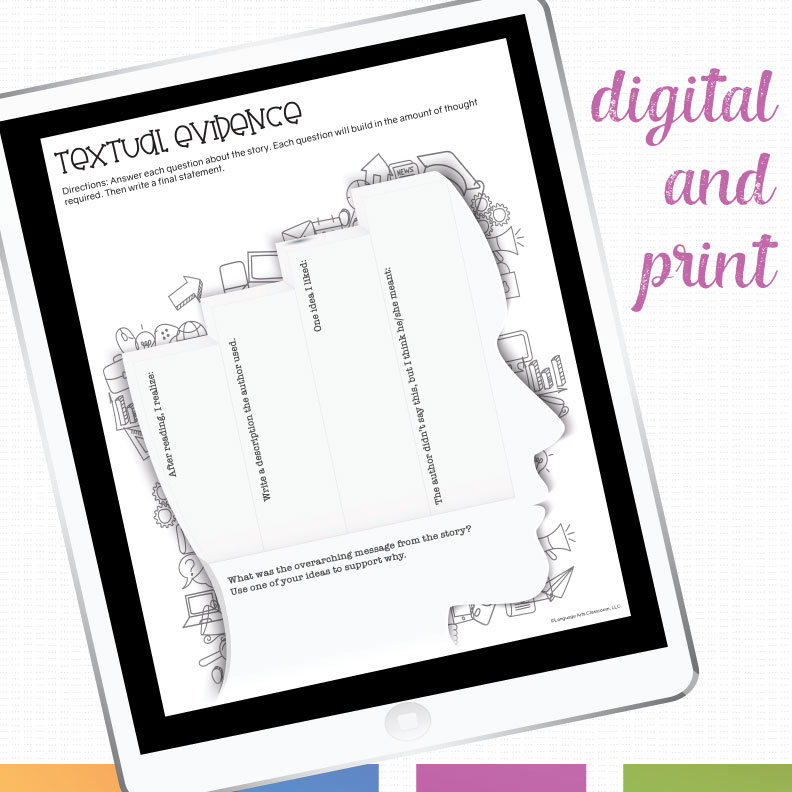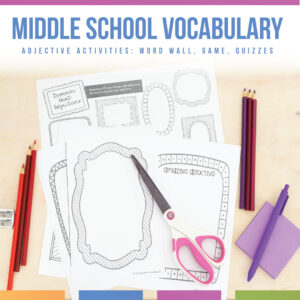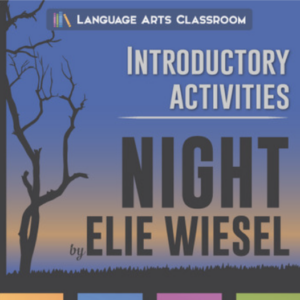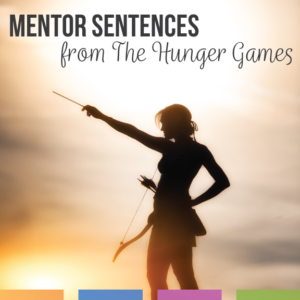Description
These text analysis tools can be used with any piece of literature or added to literature lessons. These graphic organizers were created to scaffold understanding of how characters influence other components of the story such as the theme and other characters and to scaffold drawing inferences.
I use these as part of an infographic lesson plan where we analyze and organize information, but you can use them with all literature lessons.
These organizers will get students writing and thinking about the literature they read, specifically dealing with characters and inferences. They are perfect exit tickets, brainstorming tools, or springboards for writing assignments. I created these to break down the standards CCSS.ELA-LITERACY.RL.9-10.1 and CCSS.ELA-LITERACY.RL.9-10.3.
You can see the literature graphic organizers in the thumbnails and preview. You will receive these in a PDF version and Google Drive link. I have also included a page of teaching ideas.
Specifically these literary analysis infographics contain:
1. Blooming character: Start students with the basics by identifying the multiple components of a complex character.
2. Theme development: Students will decide on the story’s theme and find support for how characters develop that theme.
3. Complex character: Students will analyze how a complex character shapes other characters.
4. Motivation: Students will look at a character’s motivation and find support that explains how the character has intrinsic and extrinsic motivators.
5. Analysis: The “analysis” forces students to articulate their inferences. They must provide an overall statement after they see all of the inferences laid out.
6. Inferences: The “inferences” provides an alternative method for extracting an inference. Students will start with their overall inference, and then think about what helped them draw that conclusion.
7. Text analysis. Students find meaning in the story. I use this infographic when students connect well to a story.
8. Scaffolded conclusions: The final infographic is a scaffolded version for students who need help drawing conclusions. It contains questions to generate ideas.
These literature and text analysis graphic organizers resemble infographics to give a modern and older look for older students.

